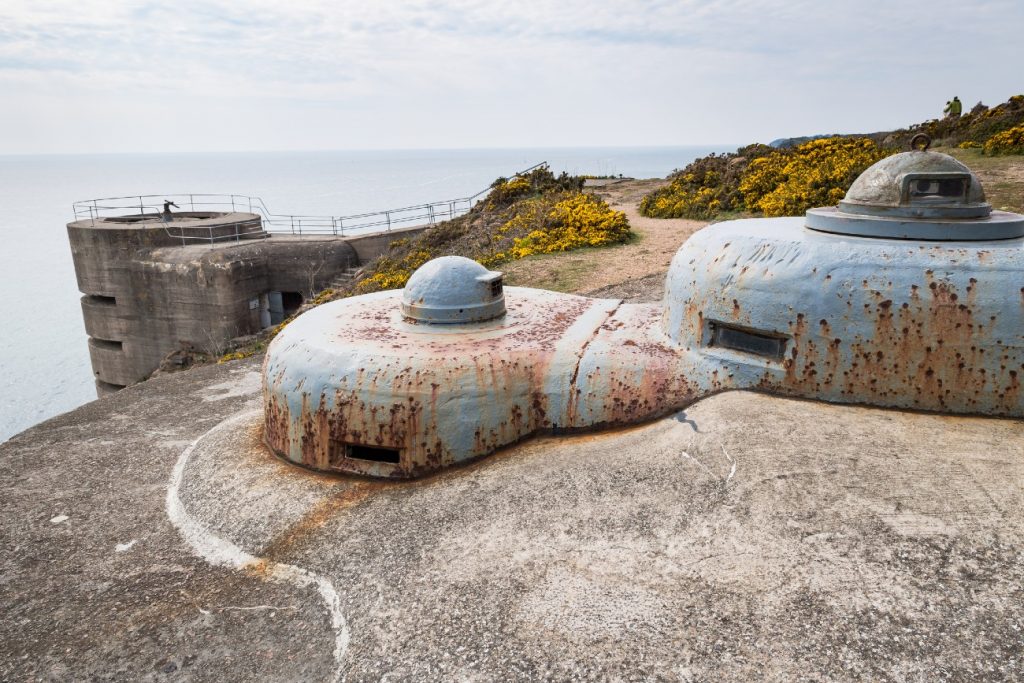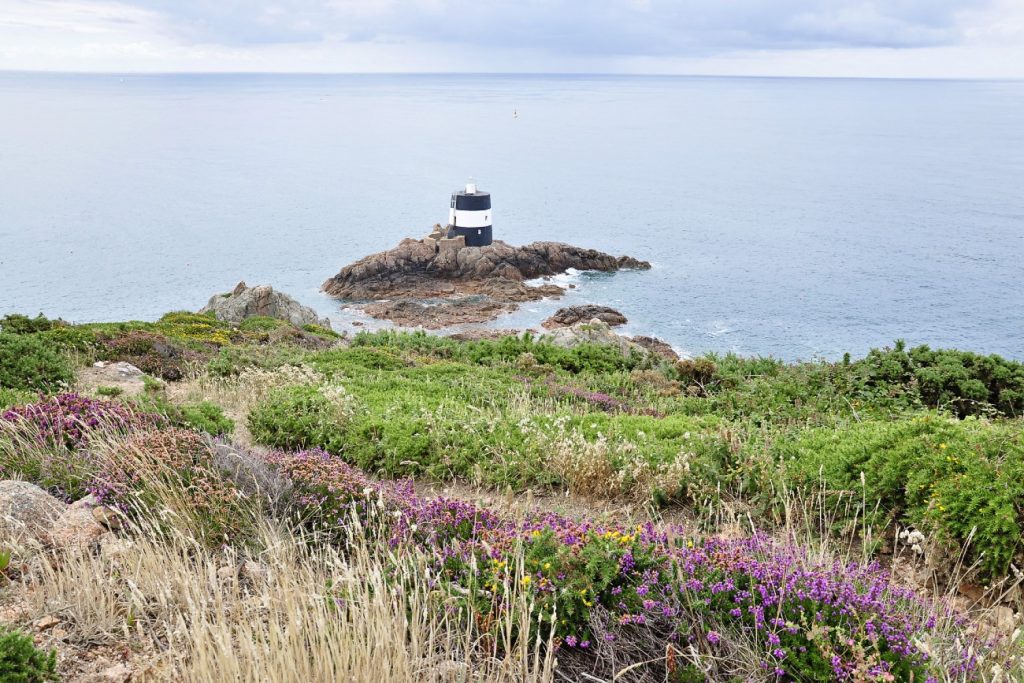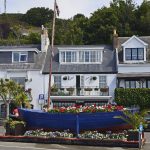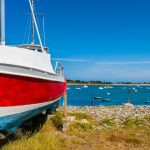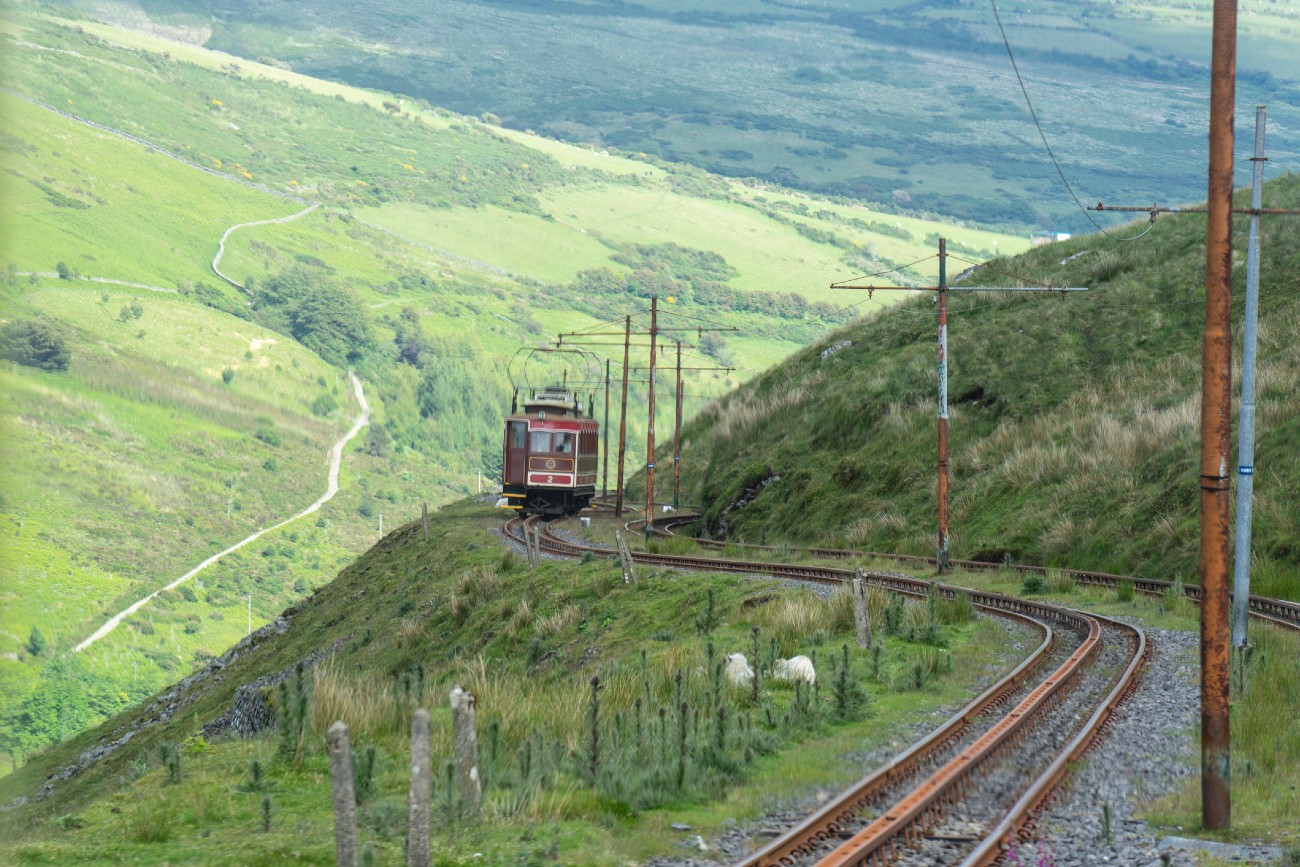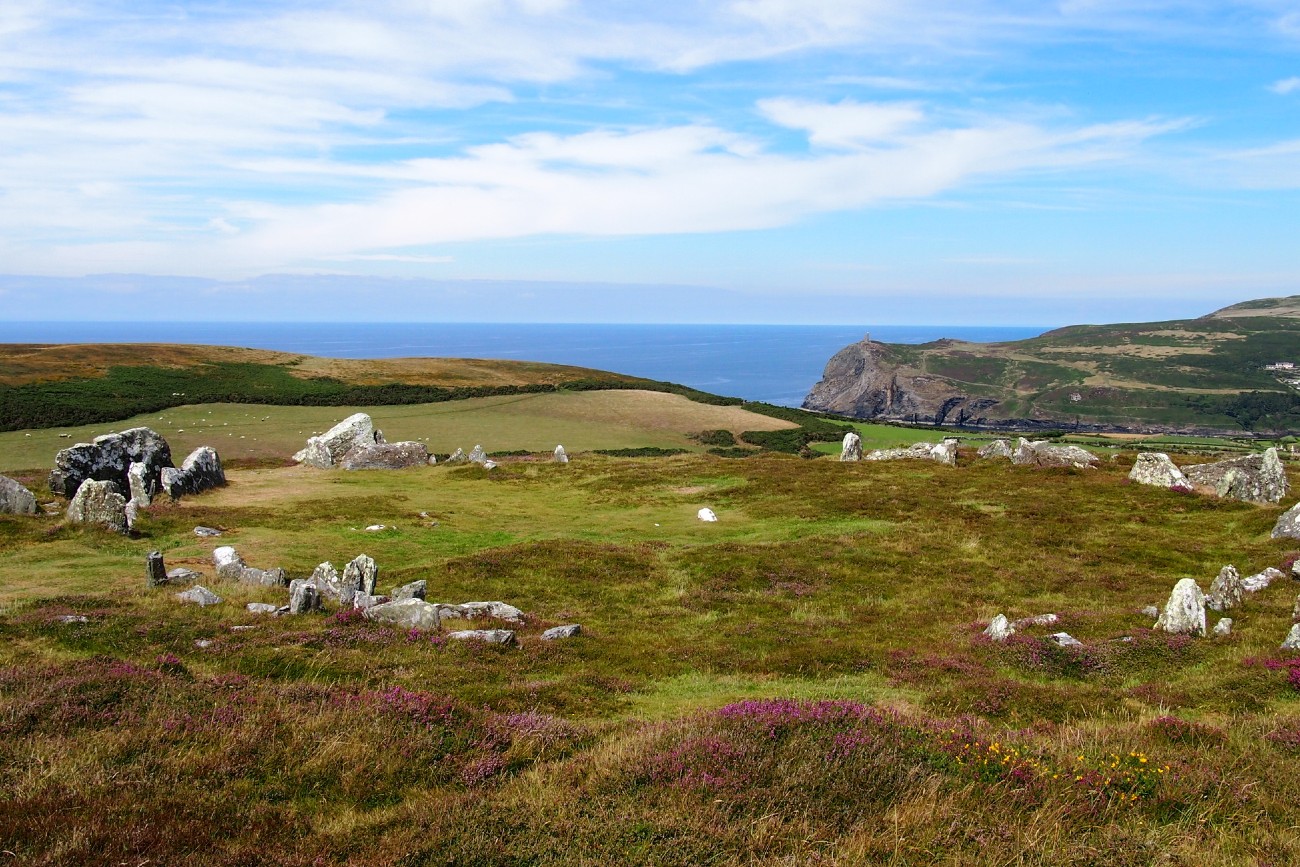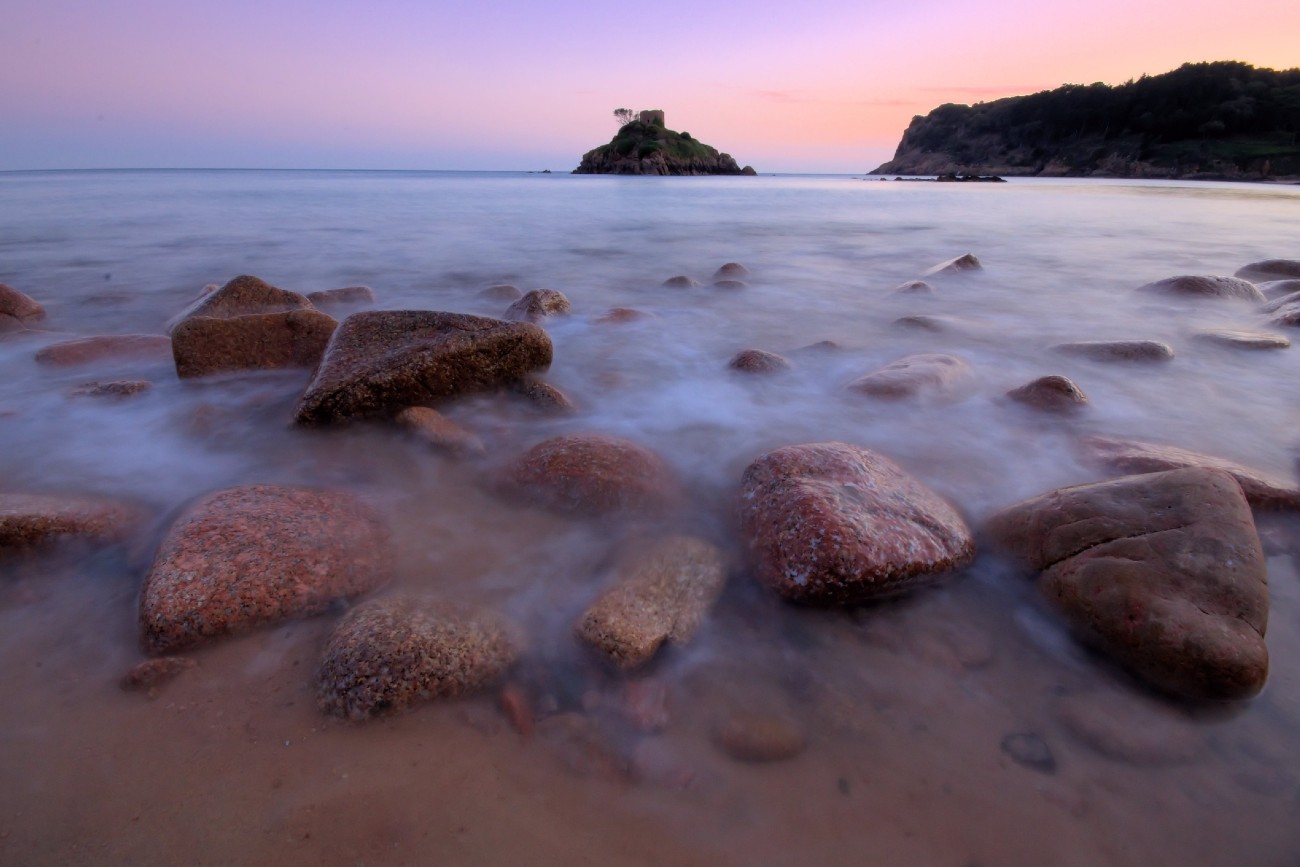
As two of the most southerly headlands on the island of Jersey, Noirmont and Portelet face directly into the prevailing south-westerly winds, with nothing but open ocean between them and the coast of France.
These conditions mean both headlands have developed a unique ecology and they can be very interesting places to visit as a result. Noirmont lies at the western end of St. Aubin’s Bay – when I drive there I see a curved feature of the Jersey landscape which stretches for several miles, with the capital, St. Helier, lying at the eastern end. The Noirmont headland provides a great vantage point over the bay, offering views of the island’s busiest region from a place of wonderful tranquillity.
A footpath loops around the headland, hugging the coastline and passing through areas of woodland, heathland and open meadow. It’s perfect for exploring some of the rich habitats Jersey has to offer and it’s a particularly special destination for history lovers or those looking to learn more about the island’s heritage. The headland is packed full of historical sites, from restored German bunkers to the gun emplacements of Batterie Lothringen – the only naval artillery battery on the Jersey coast.
On top of these thought-provoking reminders of the island’s darker times, the remains of woolly mammoths, Neanderthals and ancient rhinos have all been found on the headland. The idea that these species once roamed the landscape is in itself an incredible thought to accompany a trip to Noirmont.
A Wild Heathland
The peninsula where Noirmont is found is also home to the smaller, sister headland of Portelet. Separated from Noirmont by the beautiful sands of Portelet Bay, Portelet consists of an untouched common which is one of the best examples of heathland on the island.
Tangles of gorse and heather dominate the landscape and burst into life during the summer months, with the flowers providing gorgeous splashes of colour. The bright yellow gorse sits in stark contrast to the darker purples of the heather. Combined with the azure blue sea, photo opportunities here are plentiful. I always make sure I have my pro camera with me when I find myself in this part of the island.
Being an important habitat for wildlife, the heathland attracts a range of species to Portelet Common, particularly birds. Dartford Warblers, Linnets and Stonechats can all be seen darting amongst the undergrowth and the occasional Kestrel might be seen hovering overhead, waiting patiently for the right moment to drop down onto the head of an unsuspecting rodent.
As the headland is situated on the south coast, it’s a prime destination for migrating birds as well, who often stop to refuel in the area before setting off again on their journeys.
Many rare species have been sighted here before and some of the best examples include the Golden Oriole, the Lapland Bunting and the Tawny Pipit. As a testament to its ecological importance, Portelet Common has been designated as a Site of Special Interest. It’s not just the wildlife which makes the headland such a great place to visit. It’s criss-crossed by a network of pathways and the walking opportunities here are made even better by the views, with some spectacular vistas of the local cliffs and bays. The landscape radiates a form of peaceful isolation that can be hard to find, making it ideal for some time spent away from it all.
- German bunkers in Jersey
- Noirmont Point
Ghostly Shapes
When visiting this region of Jersey, you may want to be on the lookout for the island’s only resident owl species – the Barn Owl. With its pale feathers and heart-shaped face, the Barn Owl is easily one of the most endearing bird species and spotting one when you’re out and about can be a magical experience.
The population on Jersey is small but closely monitored, with almost 200 nest boxes being maintained on the island for the birds to use. Generally, Barn Owls are nocturnal creatures and prefer to hunt at night. However, they are often active around dawn or dusk and these can be two of the best times of day to see them.
Their white plumage can make them appear rather ghostly as they drift across the landscape, and their eerie cries have long led people to associate them with the supernatural. Reflecting this, some of the more unusual names for the Barn Owl include the demon owl or the death owl. While this may seem outlandish, it certainly might be true from the perspective of small rodents, as the Barn Owl is a highly proficient hunter.
Its wings are designed with stealth in mind, with the feathers having comb-like edges which reduce the sound they make as air passes over them. Using this ability, Barn Owls can travel through the air in almost complete silence, making it very difficult for voles and other rodents to hear them coming.
On Jersey’s southern coast, the headlands of Noirmont and Portelet provide some of the best vantage points out over the ocean. And with the landscapes here comprising of a diverse network of ecosystems, the area is a great place to enjoy some of Jersey’s natural beauty.
Learn more about other interesting places Jersey has to offer: Orchid Fields – La Mielle De Morville


